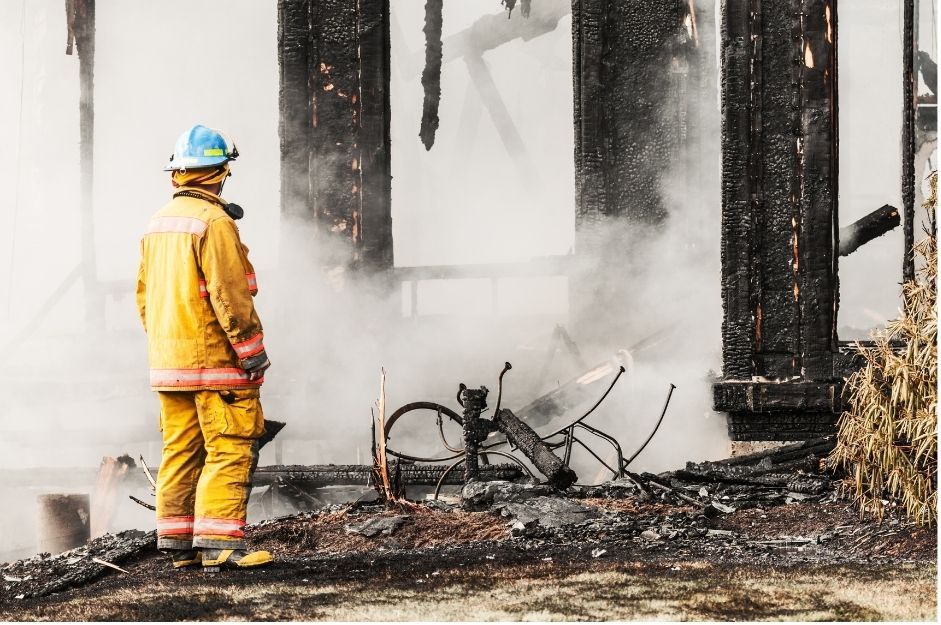Rural Wildfire Prep and Recovery Guide

- Structural Fire Damage. Direct exposure to flames can destroy or compromise homes, garages, fences, and more.
- Smoke and Soot Damage. Even if the flames don’t reach your property, smoke and soot can cause hidden damage throughout your home, affecting air quality, fabrics, electronics, and HVAC systems.
- Heat Warping and Melting. The intense heat from nearby fires can melt vinyl siding, crack windows, and blister paint—even without direct flame contact.
- Water and Fire Retardant Damage. Firefighting efforts often involve large volumes of water or fire retardant sprays. While these methods are critical for saving your property, they can leave behind residue that stains surfaces, clogs gutters, and may require professional cleanup.
- Environmental Contamination. Fires can damage soil, septic systems, and water supplies, especially in rural properties with wells or tanks.
- Create a Defensible Space Around Your Home. Remove dead vegetation, firewood, and flammable materials at least 10 metres from your structure. Maintain trimmed grass, shrubs, and overhanging branches.
- Apply Fire Retardant Spray to Vulnerable Areas. Fire retardant sprays are an effective tool for reducing flammability on fences, decks, roofing, and exterior walls. These products add a layer of protection—but they must be professionally applied and eventually cleaned after the risk has passed.
- Upgrade to Fire-Resistant Materials. Choose Class A fire-rated roofing, tempered glass windows, and non-combustible siding to reduce ignition points.
- Install Ember Guards and Roof Vent Protection.Flying embers are a major ignition risk. Install mesh ember guards over attic and crawlspace vents, and regularly inspect your roof and gutters for debris.
- Prepare an Emergency Plan and Evacuation Kit. Keep essential documents, medications, and supplies in a grab-and-go bag. Include copies of insurance paperwork and digital backups of important files.
- Call Your Insurance Provider Right Away. Notify them as soon as it is safe to do so. Ask what documentation they require and if emergency accommodations are covered.
- Take Clear, Detailed Photos and Videos. Capture all visible damage, both inside and outside the structure. Include smoke and residue impacts, even if there is no obvious structural loss.
- Document Damaged Contents. Make an itemized list of furniture, electronics, clothing, and other possessions that were affected.
- Track Temporary Expenses. Save receipts for hotels, meals, and other displacement costs—they’re often reimbursable.
- Request Paul Davis Restoration by Name. Insurance providers often prefer to work with trusted, certified restoration experts like Paul Davis, who follow IICRC standards and communicate directly with adjusters.
Our Emergency Response Promise
Paul Davis franchisees across Canada are ready to respond to your property damage, 24/7.
We'll contact you within 30 minutes of your call
We’re onsite within hours
We document your process thoroughly
We serve you with empathy and concern for your situation





